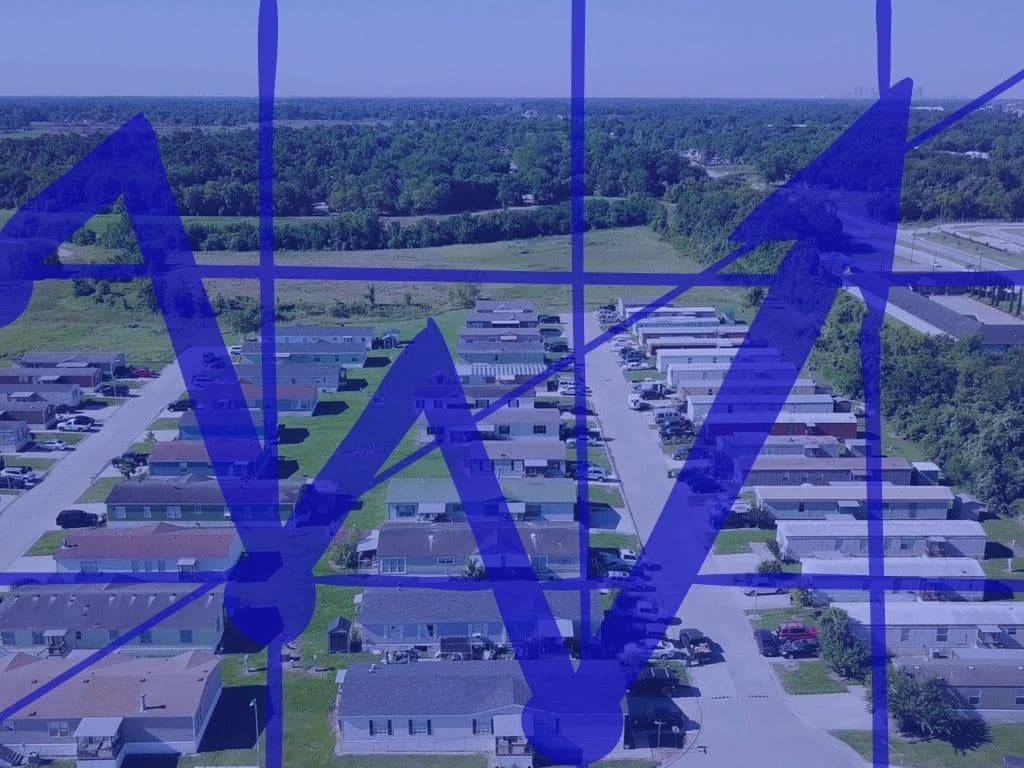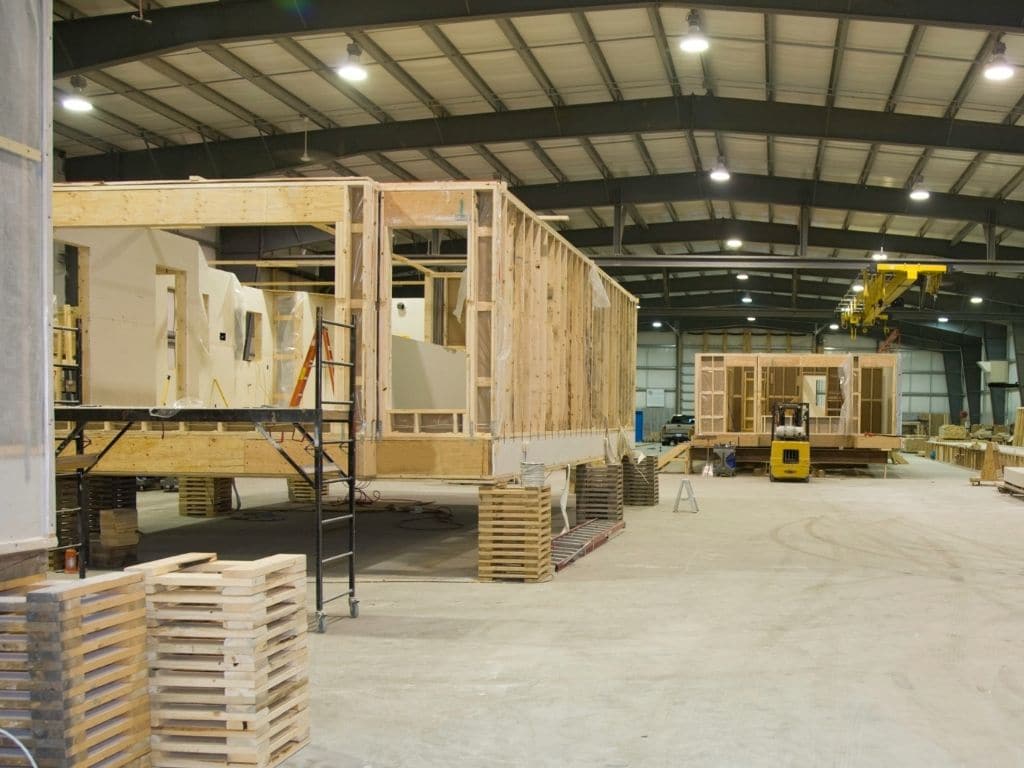
Multi-family Market Shows Signs of Weakness, Investors Look to Mobile Homes as a Solution
Within the U.S. housing market, there are myriad different investment options, and not all have been performing the same. Multi-family units are a popular asset class, favored by many investors. But the popularity of multi-family has actually hurt its ability to generate returns — the increased demand from investors has pushed prices up, driving returns on these investments down.
In real estate, the annual return on investment is called a “Capitalization Rate” (cap rate for short). A cap rate is calculated by taking the investment’s overall net cash return and dividing it by the price of the asset. The higher the cap rate, the greater the return, and the more money the investor expects to earn. According to recent research by Marcus & Millichap, the cap rate for apartments in the U.S. has been dropping since 1990.
Related: Want to learn more about Cap Rates? Read our Cap Rate Primer.
Here in Los Angeles, investors have experienced the effects of declining cap rates firsthand, feeling the impact of lowered returns on their multi-family investments. Smart investors are looking at alternatives to standard multifamily investments as a way to recreate the high returns they enjoyed in the 1990s.
Multi-family Market Shows Signs of Weakness
Even before the COVID-19 pandemic, rents had begun to decline. COVID-related population loss from large urban centers like Los Angeles and New York has accelerated this trend, pushing returns even lower. This flight from urban centers has had the additional negative impact of depressing rental rates. In Los Angeles, for example, rents were down 6% as of October 2020. Even with decreased rent for many residents, they are still finding themselves unable to pay their bills and may soon be forced to relocate to more affordable areas. The overall result of this is an uncertain future for traditional multi-family, and greatly reduced returns for investors in Los Angeles and other large cities in the U.S.
So, if you’re a real estate investor that has traditionally invested in markets like New York and Los Angeles, what alternatives to traditional multi-family should you explore?
Mobile Homes to the Rescue
Not everyone has the income or a work-from-home arrangement that supports a move to the suburbs. Prospective tenants whose jobs are keeping them near the city have been increasingly pushed to the more affordable rental options. If a rent-controlled apartment is not available, these renters are often looking at mobile or manufactured homes, which represent some of the last naturally occurring affordable housing in the U.S. The 22 million tenants (you need to buy a subscription to read this) who already live in mobile and manufactured homes are likely to stay put.
In addition to being an important source of affordable housing, mobile homes and manufactured homes also offer investors solid returns compared to traditional multi-family. But first, what’s the difference between a mobile home and a manufactured home?
The Difference Between Mobile Homes and Manufactured Homes
The difference has to do mainly with the 1976 Mobile Home Construction and Safety Act, which upgraded building standards for movable homes that were built offsite. This document also stated that, after 1976, any newly built home of this type would be referred to as a “manufactured home.” Though not technically correct, you’ll sometimes see “mobile home” used as a catchall descriptor for movable homes built before and after 1976. However, any home built after 1976 should be referred to as a manufactured home due mainly to the updated HUD building standards.

Why Mobile and Manufactured Homes are a Great Investment
Manufactured home investments are highly affordable and will become increasingly desirable among renters who need to lower their expenses.
Housing close to urban cores has become increasingly unaffordable for low-income families, who are turning to manufactured home parks as a means of living in pleasant, comfortable accommodations within a reasonable distance from the city while staying within their budget. In many areas, wages have failed to keep pace with increased costs of housing, and as a result orders for new manufactured homes have been rising for the past decade to close this gap.
The stereotype of dilapidated mobile home parks is largely outdated. Today’s manufactured homes take advantage of highly efficient assembly lines to reduce costs while providing a high-quality home. And with proper maintenance, these modern manufactured homes can last for decades. This further increases the desirability of manufactured homes for a variety of renters. For some renters, a manufactured home is their last option, but for others, it is a surprisingly comfortable way to save a significant amount on housing costs.
Investments in manufactured homes rented out in designated parks can average annual returns of 8% or higher. The risk can be relatively low, as many of the tenants have limited alternatives. A manufactured home park can have a large number of rental lots and tenants, many of whom live in the community long-term. This means that fluctuations in occupancy can be usually subtle without a significant impact on the bottom line.
As has been shown by the recent activity of large private equity groups, these parks can sustain 10–15% increases in lot rent over a few years while retaining the majority of their tenants. Blackstone, the world’s largest alternative asset investment firm, has become obsessed with manufactured home parks. In 2018 and 2019, Blackstone spent $175 million on thirteen mobile home parks in the Mesa and Apache Junction areas of Phoenix, Arizona. Clearly, the pandemic has not hurt their investment strategy, because Blackstone is currently planning to spend an additional $550 million on 40 more parks, most of which are located in Florida.
Can’t Afford to Buy a Park?
At TFS Properties we offer an affordable alternative for investors who are not in the market for buying an entire park. We offer individual units to investors, with prices ranging from $40,000 to $60,000 each. As an investor you enjoy the strong positive cash flow (11-12%) from the tenant’s rent in your unit. As well, you don’t have to worry about management as there’s an onsite manager in the park taking care of the day to day issues that accompany rental property.
When You’re Ready to Invest, Work with TFS
For aspiring owners of manufactured home parks (and any other type of real estate investing), research is critical. Take your time and be patient as you search for the right property. The best way to get out of a bad deal is never to get in.
If you’re looking to get started with manufactured home park investing, the commercial real estate agents at TFS properties are here to help. With over 30 years of industry experience, we help our clients make sound investments. We also use our connections to offer our clients exclusive access to off-market properties that are often much more reasonably priced than on-market properties.
If you’re ready to get started, contact our team for an initial client consultation.



